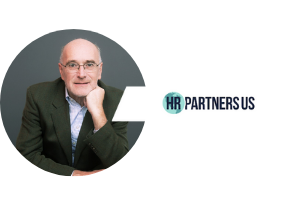{Member Insights} Back to the Office Post COVID-19
The FACC-NY network is composed of a diverse mosaic of talented, experienced, and open-hearted professionals united by a desire to share their knowledge, nurture meaningful connections and succeed professionally. In this new Member Insights series, we invite a guest member to contribute timely and relevant tips for adapting your activities to overcome immediate challenges and plan for the long-term.
Emmanuel Cargill is a Senior Consultant and Recruiter, as well Founder & Managing Director of HR Partners US. Emmanuel has significant C-level management and operational expertise in consumer goods with a focus on food, wine & spirits, and cannabis.
Planning the return of employees is already in the mind of most business leaders. From our government elected officials to our experts (consultants, doctors,…..), we are starting to hear ideas on how to deal with employees’ return. It will not be easy and operations are not likely to fully return to normal until vaccines are readily available which may take at least a good year. The return will be complex, lengthy, and in steps. And if we have a second virus wave, which some scientists say is likely to happen, even more challenging.
Now is the time to start planning for it. It is up to all leaders and HR executives to develop a plan. Policies and guidelines need to be developed that will ultimately mesh with directives from the government, state, and local bodies (as we know, not always aligned). And be prepared for frequent changes. Leaders should create immediately a task force including representatives from key sites, functions, experts (doctor, HR), community leaders with clear deliverables.
Many companies have been looking at Asia for a playbook. As reported in the WSJ, visitors at the Shanghai Disney Resort must pass a temperature check and present a government-controlled QR code on their phone just to enter. And guests must wear masks at all times, removing them only for eating. In addition, hours and capacity are limited. Some European countries are starting to announce rules for getting back to normal.
The focus of this post is to provide three preliminary ideas for office workers. It is for leaders and managers responsible for the workforce working in offices. It excludes plants, hotels, restaurants, sports arenas, stores that require specific rules. My questions are; What precautions are needed to allow for offices to be open again? How to manage the return of all workers back?
Rule #1 is to open up gradually the offices
Employers should plan on bringing employees slowly. If companies open gradually, they put fewer people at risk. One option is to bring back workers in waives with groups based on business needs and priorities. Additionally, companies should maintain remote work. Some functions and positions are more fitted for remote work than others. Companies should consider to have employees work from home a few days a week in rotation. And I am convinced that full remote work may become a reality for specific employee groups. It has been battle-tested during this crisis and the feed-back has been positive. For open-plan offices, companies may entertain rotating employees. New federal rules are likely to come through in the weeks ahead, so they will need to get incorporated into the new policies. Every site may also be ruled by local or state regulations as governors and mayors across the U.S. are working to create frameworks to slowly roll back virus-containment measures.
Rule #2 is to make sure that employees are not putting others at risk
Since infected employees can carry the virus without showing symptoms, it is crucial to limit office entry to healthy people. A good measure would be to take a temperature check at the entrance, either maned or with automated devices. This has become a best practice in Asia. Then the same precautions as during the virus should be provided: mask (compulsory to begin with?); hand sanitizers and gloves readily available. Put them in many locations inside your offices. When available, on-site testing capabilities should be added. If an employee shows symptoms, testing could be conducted to decide whether the employee could stay. It is important to guaranty a safe work environment. Make sure enhanced sanitation crews will be cleaning and disaffecting offices on a regular basis. As large scale and tracing (GPS or blue tooth) programs become the norm, specific measures for these devices can be added. Lastly, HR needs to develop policies that allow people at risk to continue to work at home. No one should be forced to come to an office if this will put them at risk. The company’s liability is a risk to manage because a lack of safety measures at work could drive potential legal actions from concerned or infected employees. We have seen this in France at Amazon. And during the first weeks of return, frequent communications and town hall (live + online) should be made to communicate the new rules and minimize fear.
Rule #3 is to create “social distancing” at the office
Social distancing rules applied during the virus should be maintained at the office. But it will not be easy to respect 6 feet between employees. it will take time to correctly reset the office space that allows for social distancing and safety measures; office space layout and way of working will need to change. Many ideas are starting to emerge. For open space offices: providing daily desk pads, putting plexiglass dividers; setting traffic flows with floor signs. A large real estate is exploring a new design concept “Six Feet Office” to manage social distancing at the office. In addition, rules and guidelines need to be set for meetings; with a preference for calls and videos since many systems exist (Skype, Zoom, etc..) and have proved themselves. Face to face meetings should be limited to no more than 4-5 people. As the virus evolves, rules will change.
Hope this helps. #StaySafe.
If you want to connect with Emmanuel and learn more about his professional background and areas of practice, log into the FACC Member Directory to send him a message.



